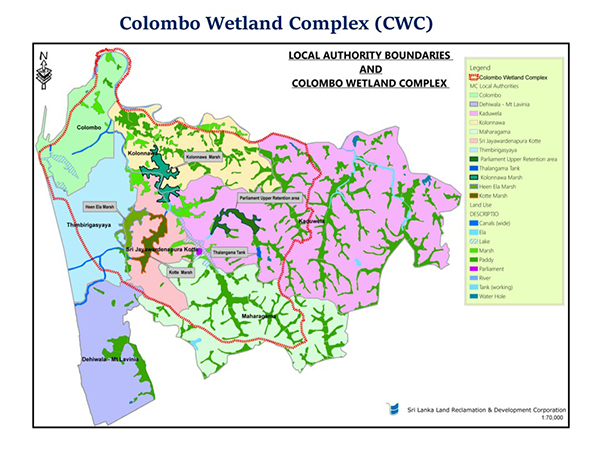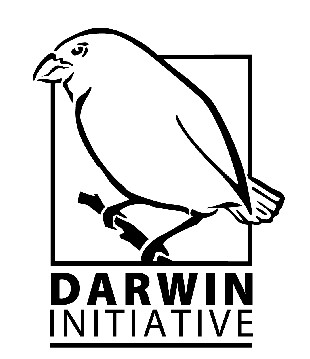Course introduction from Cobra Collective UK on Vimeo.
This online course has been developed for the ‘Increasing the resilience of biodiversity and livelihoods in Colombo’s wetlands’ project, funded by The Darwin Initiative, United Kingdom. The project works with communities to monitor wetlands, communicate to decision makers and manage their wetlands to protect biodiversity and maintain essential wetland benefits that support the livelihoods of the urban poor within Colombo, Sri Lanka.

The project is being delivered by the following partners:
- International Water Management Institute (IWMI), Colombo, Sri Lanka
- Cobra Collective (CC), United Kingdom
- Biodiversity Secretariat, Ministry of Environment, Sri Lanka
- Department of Wildlife Conservation, Ministry of Wildlife and Forest Conservation, Sri Lanka
- Wetland Management Division, Sri Lanka Land Development Corporation (SLLDC), Sri Lanka, Ministry of Urban Development, Coast Conservation,
Waste Disposal, and Community Cleanliness, Sri Lanka
- Central Environmental Authority (CEA), Ministry of Environment, Sri Lanka
- Urban Development Authority (UDA), Ministry of Urban Development, Coast Conservation, Waste Disposal, and Community Cleanliness, Sri Lanka
- Field Ornithology Group of Sri Lanka (FOGSL), Sri Lanka
Although the online course has been developed for the project in Colombo, it builds on work by the Cobra Collective on several projects and is available and applicable to anyone that wants to work with their community or another community to tackle environmental challenges and issues. This course focuses on wetland habitats but can be used with communities living in or near different landscapes.
Community management and monitoring
Community management is the implementation of a management approach that provides a solution to social and environmental challenges the community faces. Community monitoring helps communities understand changes that have occurred and assess whether management interventions are working or not. Community monitoring and management is developed and carried out by communities themselves. This course introduces the concepts, techniques and participatory approaches you can use to engage your community or a community you are working with to monitor and manage their own solutions to the challenges they face.
Learning outcomes
This course covers lots of different topics to help you engage with your community or another community you are working. It will help community monitoring and management carried out by the community and engagement with policy makers. The following topics are covered in this course:
- Unit 1 - Core concepts of:
- Action learning
- Community engagement
- Community owned solutions
- Impact evaluation
- Unit 2 - Participatory techniques for engaging communities including:
- Workshops
- Focus groups
- Interviews
- Informal discussions
- Participatory drawing
- Participatory photography
- Participatory video
- Unit 3 - Digital skills including:
- Introduction to computers
- Mobile devices
- Internet use and communication
- Document preparation
- Presentations
- Data analysis
- Image editing
- Audio and video editing
- Digital ethics
- Unit 4 - Environmental monitoring approaches including:
- Methods for environmental data collection
- How to plan a successful monitoring study
- How to analyse and share findings
- Unit 5 - Community monitoring approach including:
- What is community monitoring
- How to develop a community monitoring programme
- How to evaluate a community monitoring programme
- Unit 6 – Community wetland management approach including:
- Our relationships with water and wetlands
- What is community management
- How to identify community owned solutions for community management
- How to implement and evaluation community management
- Unit 7 – Integrating community monitoring and management into frameworks of policy and management including:
- What policy is and who policy makers are
- How to successfully engage policy makers
Who should study the course?
There are no prerequisite skills or knowledge needed before taking this course. Just openness, curiosity and interest in learning about how to engage with communities. This course is designed to be useful for a community member that wants to mobilise their community to deliver monitoring, management or engagement with policy makers. It has also been designed to be useful for practitioners that work for government agencies or non-governmental organisations that wants to more effectively work with communities.
How learners can go about the course and the self assessment
On the home page of each course unit (you will need to enrol on each) you will find the following tabs: “Course description”, “Course content” and “Course review”. The “Course description”, where you are now, contains a brief course description and outcomes. By clicking the “Course content tab” you can see the list of the course lessons. Each lesson contains a video and a final self-assessment quiz. Some lessons also contain text and illustrations. The videos can be directly played within the course page. To turn on the video subtitles click on the icon “CC” that is located at the bottom right corner of the video.
To access the quizzes click on the icon

To start the quiz click “Start Attempt”. After you’ve answered all questions make sure you click “Finish Attempt” and then “Submit all and finish” to see the quiz evaluation. You will need to achieve a grade of 70% or more to pass the quiz. You can take all the quizzes as often as you'd like. To go back to the other lessons click on “Course content”. You can take the self-assessment quizzes as many times as you want. We recommend you take them until you get everything correct to make sure you fully understand the material. If you want to send us any feedback on the course you can go to the Homepage and click on the “Course Review” tab.
Gain a statement of participation
By studying the course you will have the opportunity to gain a statement of participation upon completing the course – you need to click on the ‘Enrol’ button to be able to do the quizzes and activities and to download your statement of participation.
About this course
To complete the online course it will take approximately 24 hours. However, to deliver the techniques with a community then it will take longer. For example, to identify a community owned solution with a community would take approximately 12 hours.
Copyright information
This course is made available under CC BY-NC-SA 4.0: Cobra Collective
Any third-party materials featured in this course are used with permission and are not ours to give away. These materials are not subject to the Creative Commons licence. See the terms and conditions and our FAQs. Please see the course acknowledgements for further information about copyright details.
Citation for the course
Cobra Collective. 2021. Community Environmental Monitoring & Management Online Training Course.
Acknowledgments
Illustrations for Units 1, 4, 5 & 6 were produced by Ed Dingli (www.eddingli.com).
Animations for Units 1, 4, 5 & 6 were produced by Rosie Miles (www.rosiesmiles.com).
Graphics for Unit 2 were produced by the Cobra Collective.
Graphics for Unit 3 were produced by the University of Guyana.

1 Core Concepts
Engaging all members, voices and opinions within a community is vitally important when developing solutions to social and environmental challenges the community face. This unit discusses the core concepts behind how you engage with your wider community or engage with another community to identify solutions. The most effective community solutions are ones that benefit the community, are fair and do not impact negatively on the environment. The aims of this unit are to introduce the following: how to follow an action learning approach to engagement and management; why community engagement is important and approaches to successful engagement; the concept of community owned solutions; and how to determine impact.
Try this courseCourse
4 hrs
2 Participatory Techniques
Participatory techniques are particularly important when engaging with your community or another community. They allow all voices, opinions and practices to be shared from all different sections of the community.
Try this courseCourse
5 hrs
3 Digital Skills
Digital skills are important to be able to use the range of technologies we have available for collecting, organising, processing and sharing data. They include having a basic understanding of digital technologies including mobile devices and computers, being able to use a range of software applications and having an awareness of how to use digital devices safely and ethically.
Try this courseCourse
5 hrs
4 Environmental Monitoring Techniques
Environmental monitoring is a way of understanding the current condition and any changes that occur in the environment. Environmental change can occur to water, the land, the air, to plants and animals. Understanding environmental condition and changes can help support management activities, support policy development and its implementation, and develop information for sharing with the community, government and the wider public. The aim of this unit is to introduce why it is important to collect environmental data, some of the different methods that can be used, how to plan a monitoring study and how to analyse and share the information.
Try this courseCourse
2 hrs
5 Community Monitoring
Community monitoring is monitoring developed and carried out by communities themselves. Widespread participation of community members is encouraged in the design, execution, reporting and evaluation of the monitoring programme (discussed in Unit 4). The aims of this unit are to introduce the benefits of using a community approach when developing a monitoring programme and to provide guidance on how to plan, act, observe and evaluate it.
Try this courseCourse
2 hrs
6 Community Wetland Management
Water and wetlands are fundamental to life. How we interact with them and the management approaches we adopt can impact our health and well-being, and the environment. Community management is the implementation of a management approach that provides a solution to social and environmental challenges the community faces. It is developed and carried out by a community themselves. Identifying the most robust community management approaches is important. We call these approaches community owned solutions as they benefit the community, are fair and do not impact negatively on the environment. The aims of this unit are to examine our relationship with water and wetlands, to introduce community management, discuss how to identify community owned solutions and look at how to implement and evaluate community owned solutions.
Try this courseCourse
3 hrs
7 Integrating community monitoring and management into frameworks of policy and management
The aims of this unit are to provide guidance on how to successfully engage with policy makers to enable community management and monitoring findings to be used in policy and management frameworks and decision making. It is appropriate for both community members and institutional staff.
Try this courseCourse
3 hrs







